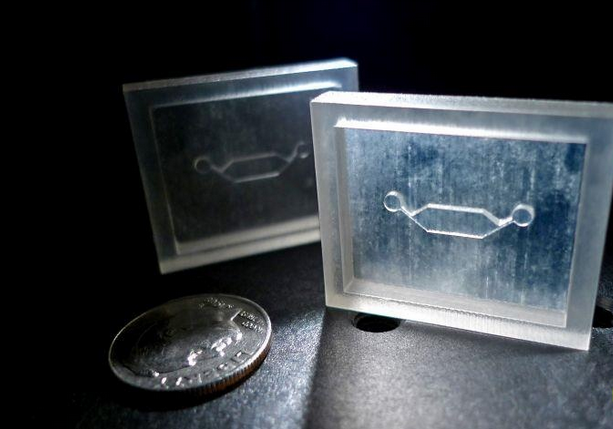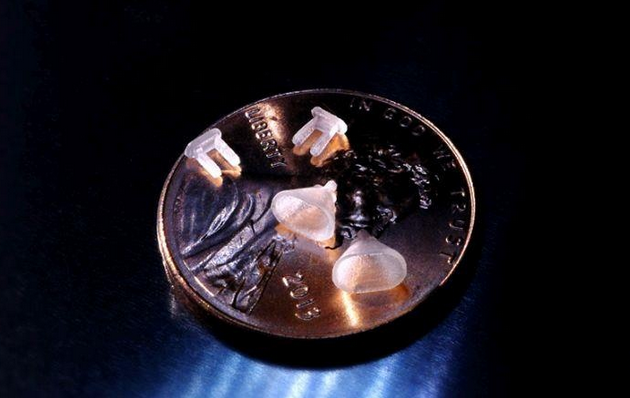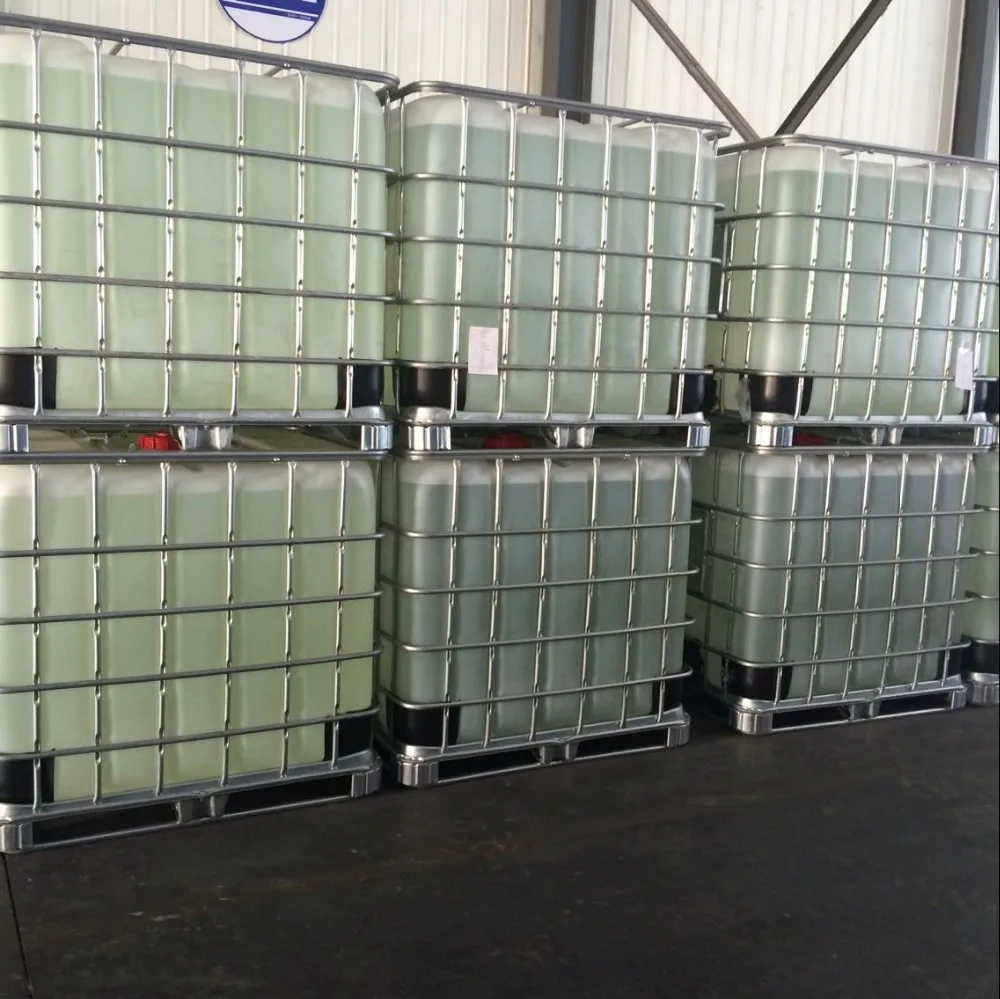Potomac Photonics, a contract manufacturer based in Baltimore, Maryland, often encounters common challenges in 3D printing: building direction, resolution, and surface finish, but in the case of Potomac, it's especially important to break through these challenges. . The company is known for precision machining and can perform machining, laser cutting and 3D printing on a small scale. Micromachining combined with dual-material SLA 3D printing enabled the company to create a vast array of medical devices and device components, not just prototypes but also end products. 3D printing in this part of the work Potomac relies mainly on a 3D Systems Projet 3500 printer, which prints as small as 16 microns thick (if smaller dimensions are required to print parts through micromachining), this The SLA printer can use two materials to print the polymer while printing the wax support and holes. After printing, the support is very easy to remove. The following figure shows the company's two applications in medical treatment. This 3D printed microfluidic mold prototype provides a culture chamber for growing cancer cells using the Projet 3500. The first case was a microfluidic mold for the "Sloan Kettering Cancer Center", which was used to make a micro-chamber of polydimethylsiloxane (PDMS) to culture cancer cells in a controlled environment. Microchambers are commonly used in biological and biomedical applications. Manufacturing molds using traditional processing methods inevitably incurs high costs. Using 3D printing to make these acrylic prototypes, Potomac can reduce costs and shorten lead times. The components in the figure are a part of the middle ear's tibial prosthesis. From the quality of these components, the direct 3D printed prosthesis may be equally good. The second case is a group of implant components for the treatment of otosclerosis. The otosclerosis is an abnormal middle ear tibia. The tibia is responsible for moving the inner ear fluid. If the tibia is hardened, the vibration is limited. Hearing will be lost. These components were manufactured for the Institute of Micromechanics and Photonics at the Technical University of Warsaw, Poland. These prototypes confirmed that these devices could be implanted into a tibia. Before Potomac, the agency tried to find another 3D printing method. But you can't do such small, precise geometries, and the tightness tolerances required for this verification. And Potomac can print 3D economically and in small batches. In both cases, the wax support has been removed and there is no additional post-processing. To achieve this effect, it is necessary to combine equipment, trial and error, and trial and error, as well as professional knowledge, the resolution of the printer. A great contribution, but other factors such as laser power and orientation have also played a role.
Formula: CH3CHOHCOOH Molecular weight: 90.08 Performance:It is colorless transparent viscidity liquid, mild acid, guide wetly; the aqueous solution shows the acid reaction. It can be mixed with water, ethanol or ether wantonly, but not dissolved in chloroform. Specification:80%, 88% Packing:25kg drums, 250kg drums, IBC plastic drums. Main use: This product has characteristics, such as hot stability natural purely with soft and certain tart flavor,etc. Widely used in the food,pharmaceutical,electroless plating industries,etc.
Lactic Acid,98% Lactic Acid,Lactic Acid 85%,Lactic Acid Of Purity 80% Shandong Tiancheng Chemical Co., Ltd. , https://www.tianchengchemical.com


